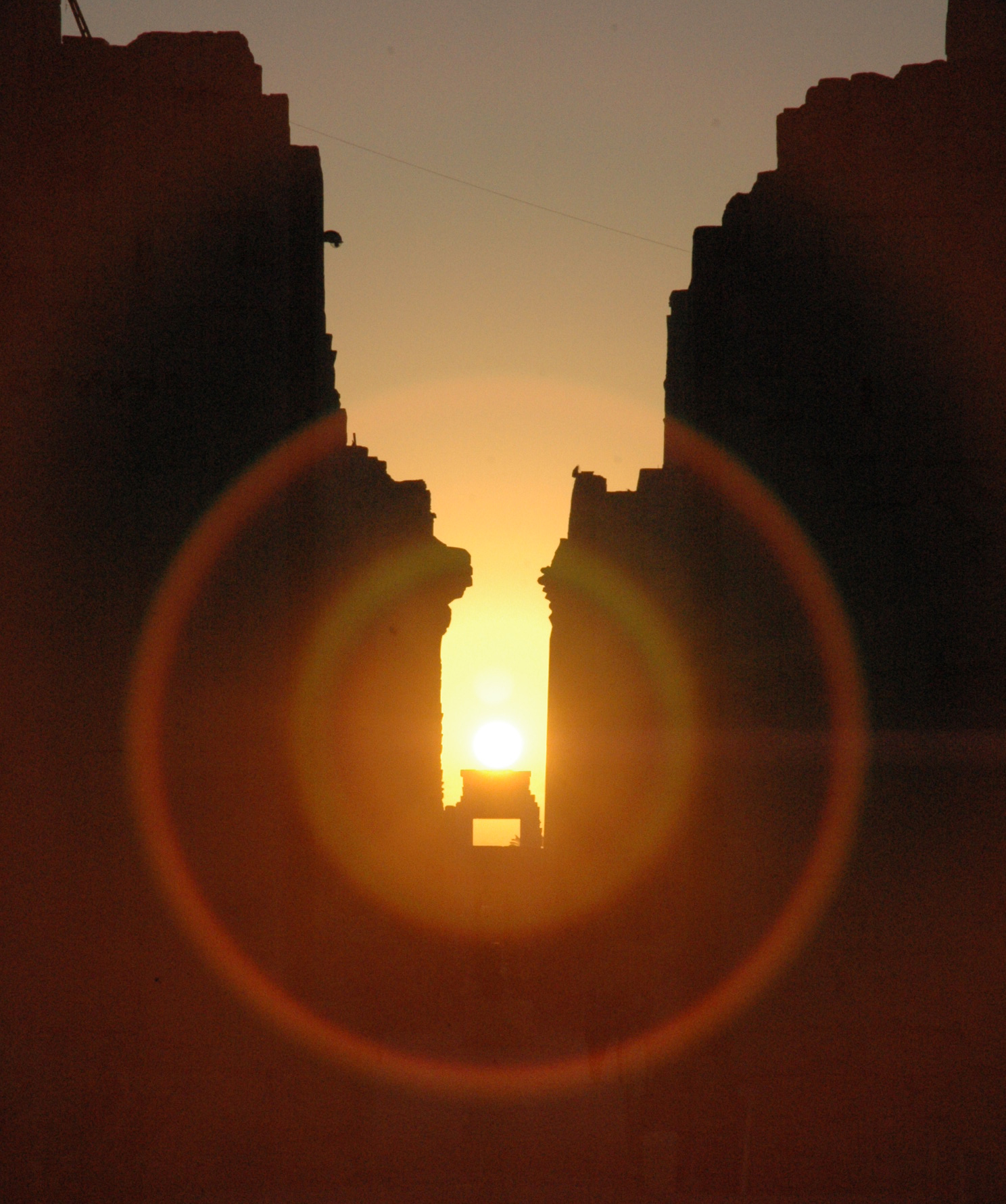June 21 marks, for the northern hemisphere, the longest day of the year. From here the days become progressively shorter as the sun sinks a little lower in the sky each day.
In the above photo the sunrise appears above the eastern gateway of the temple of Karnak during the summer solstice's twin, the winter solstice that occurs on December 21.
The name 'solstice' comes from the Latin sol (sun) and sistere (to stand still), because the seasonal advance of the sun, reaching a little higher in the sky each day, comes to a stop before reversing direction.
We know it occurs because of the tilt in the Earth's axis. Today the North Pole is tipped more toward the sun than on any other day of the year, causing the sun to be higher in the noon sky than any other day.
To the ancient Egyptians, this cyclical ebb and flow was dictated by the gods, happy to maintain the celestial rhythms as long as a constant flow of offerings was maintained by the king and his priests. In Egypt nothing was taken for granted; daily survival depended on the whim of the gods. Talk about stress!
By the way, a quick hello to Nile Magazine readers in the Southern Hemisphere, where today is the Winter Solstice, the shortest day of the year.
Photo: Juan Antonio Belmonte
